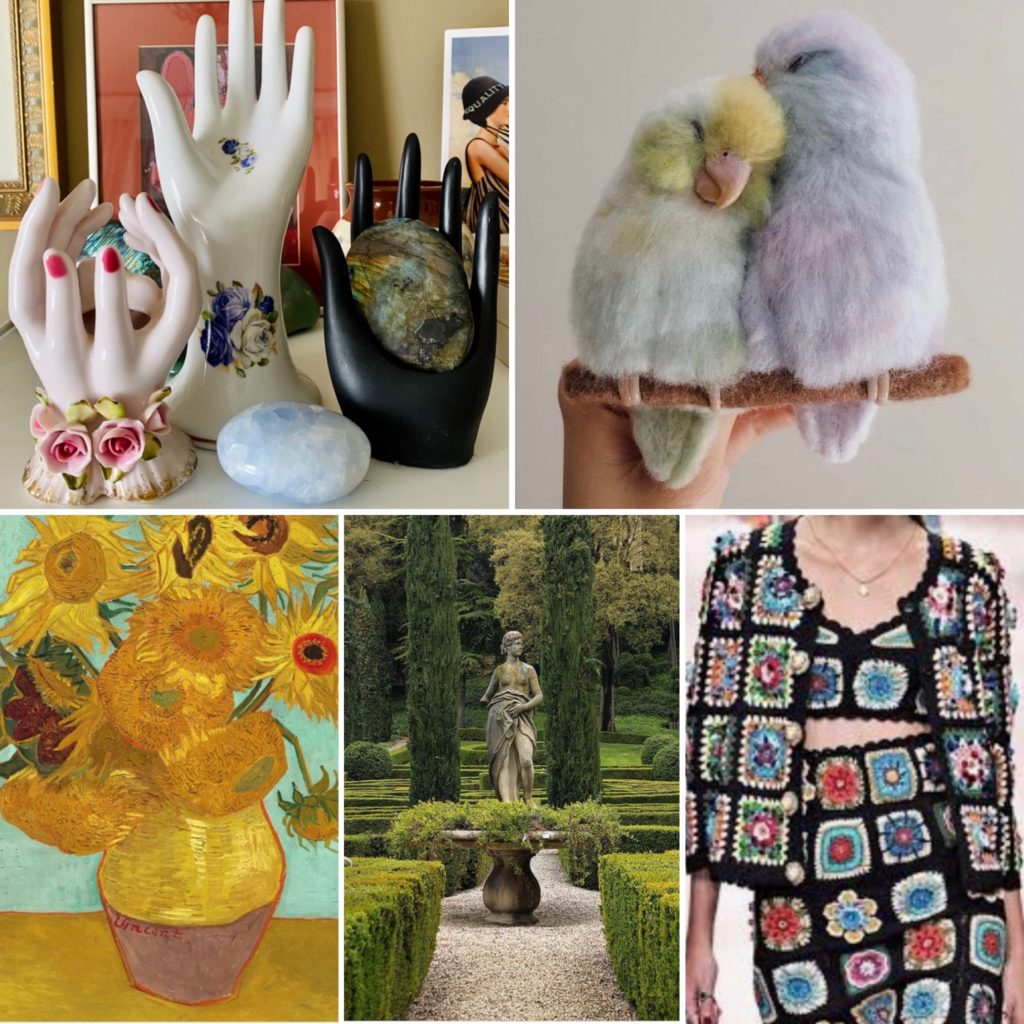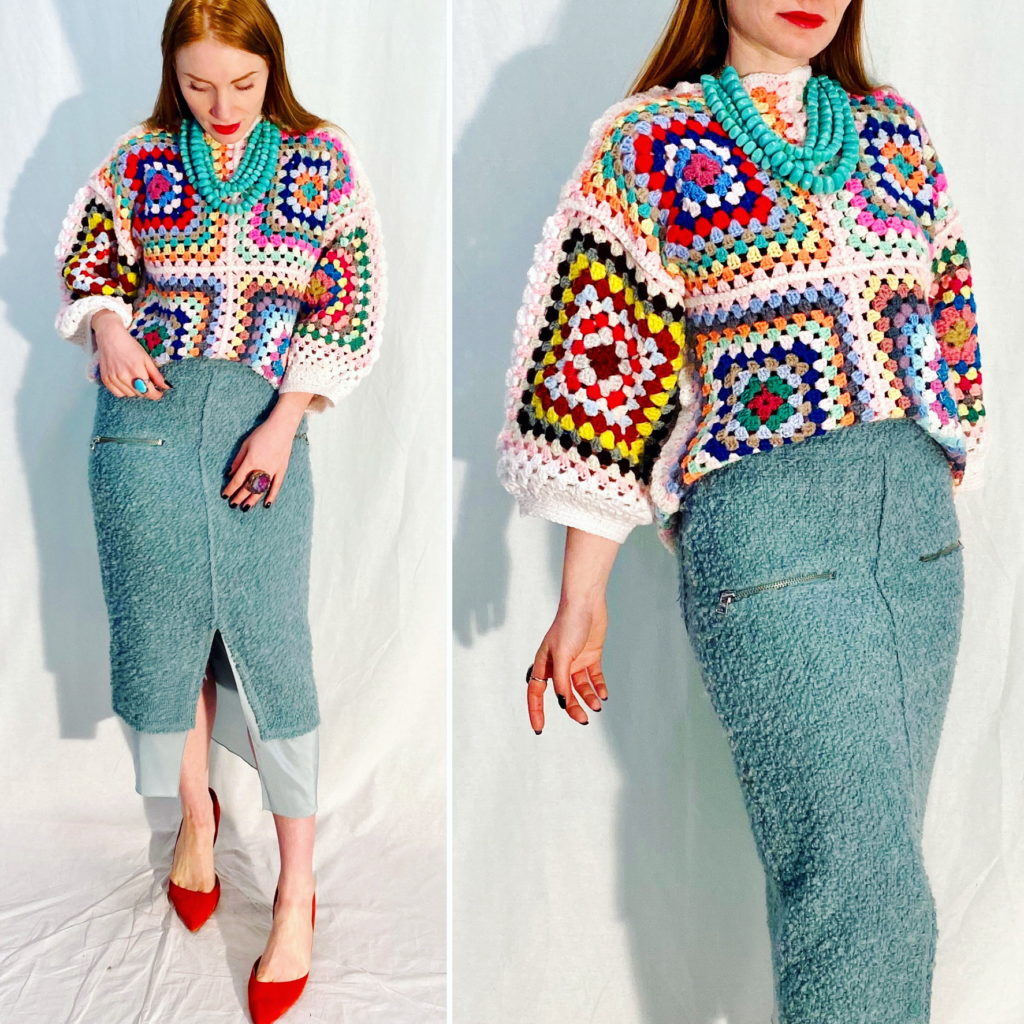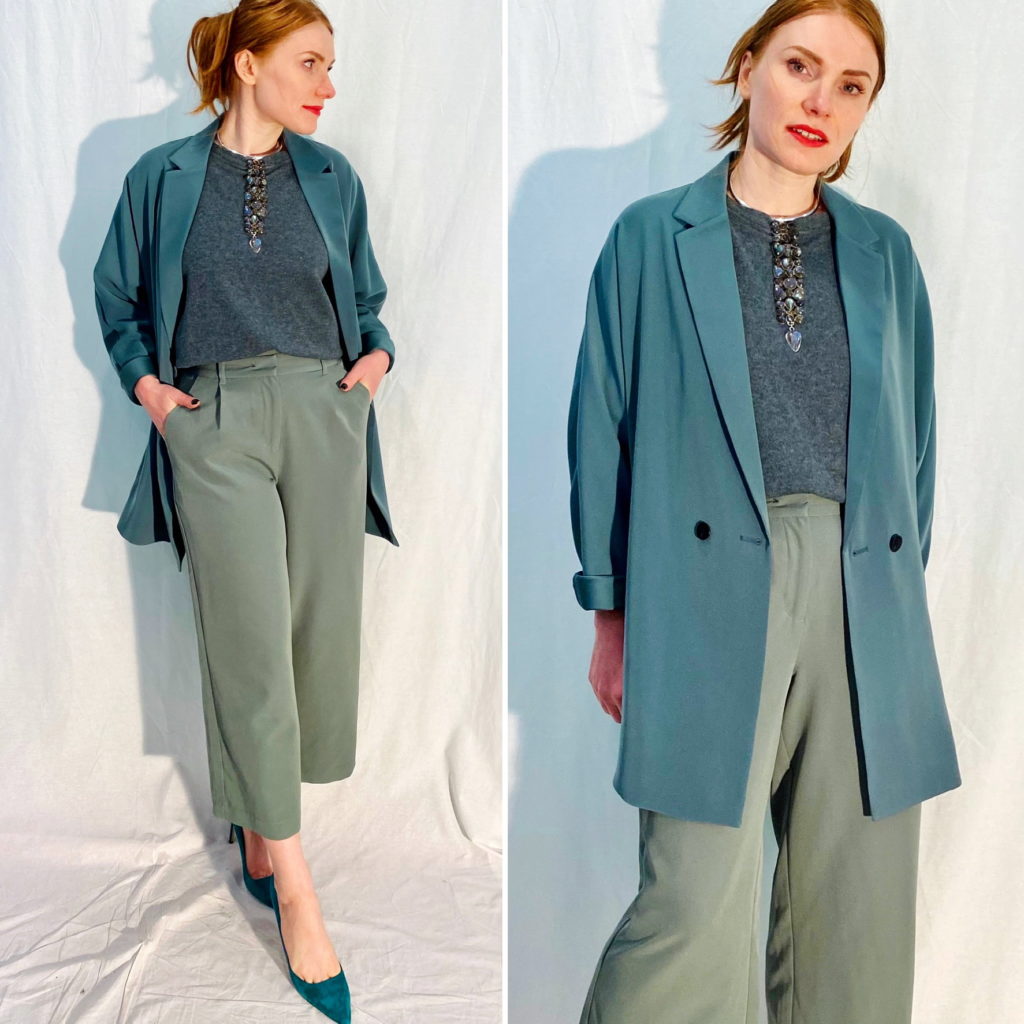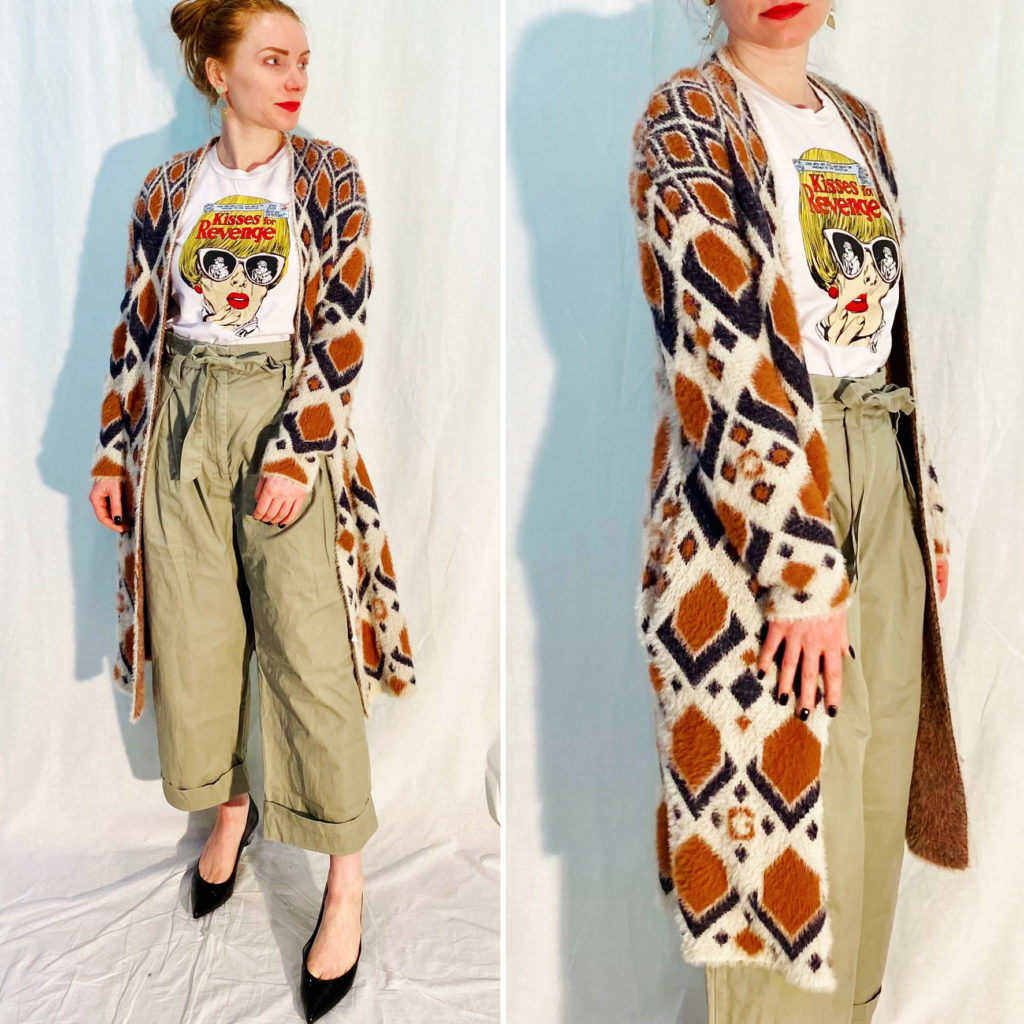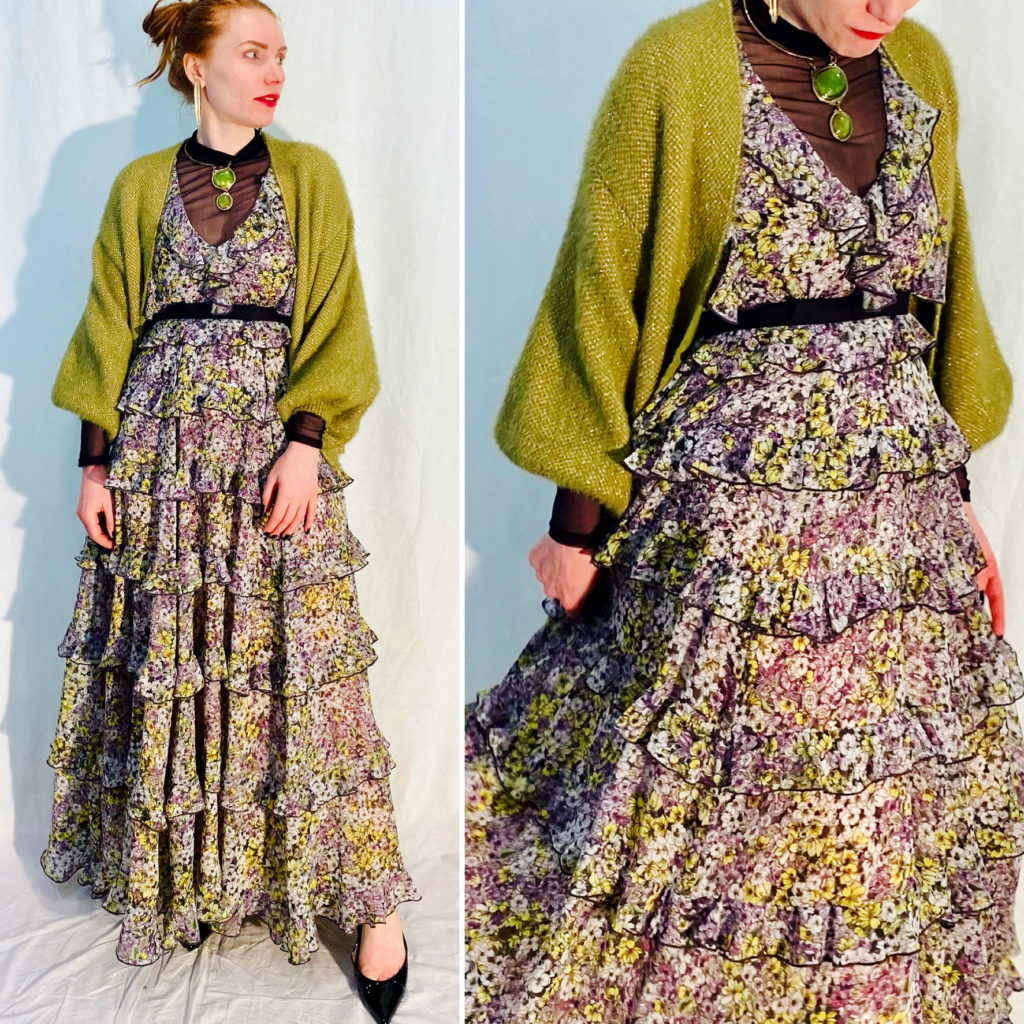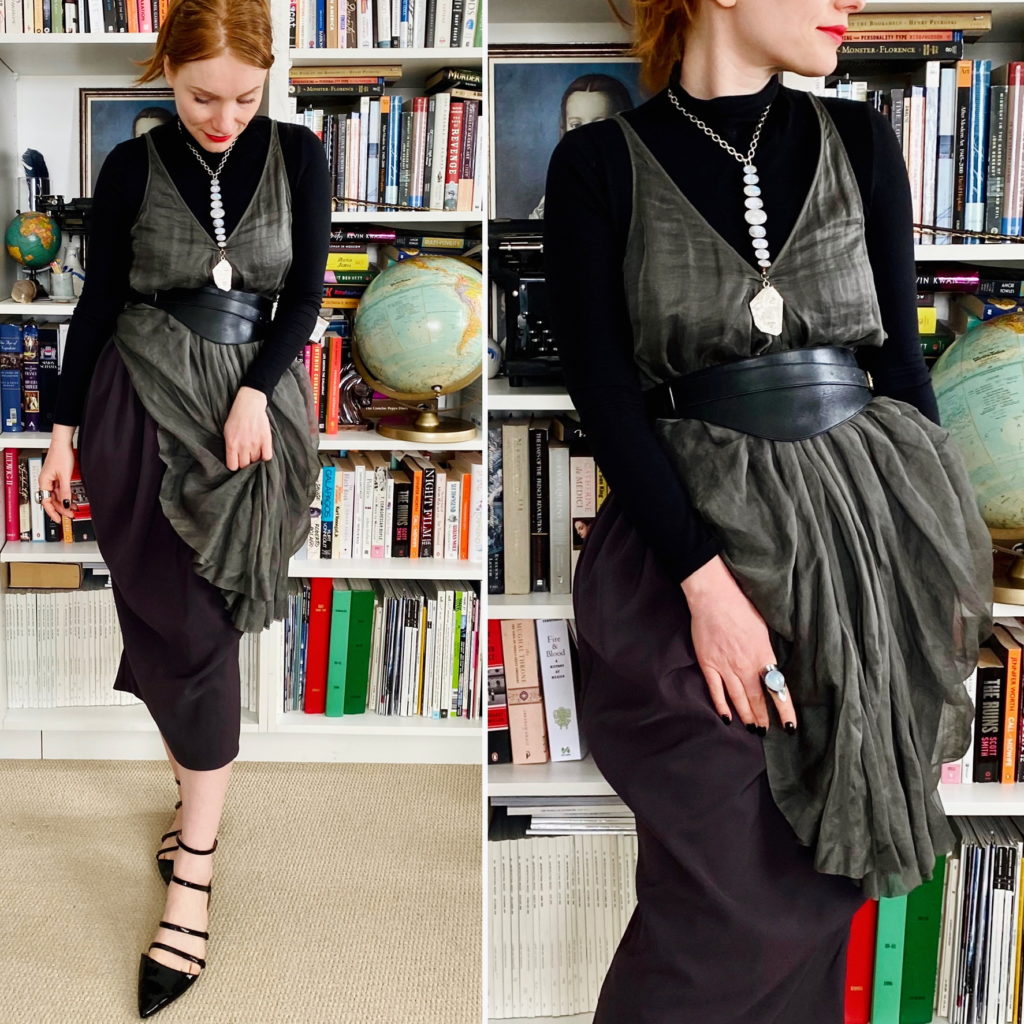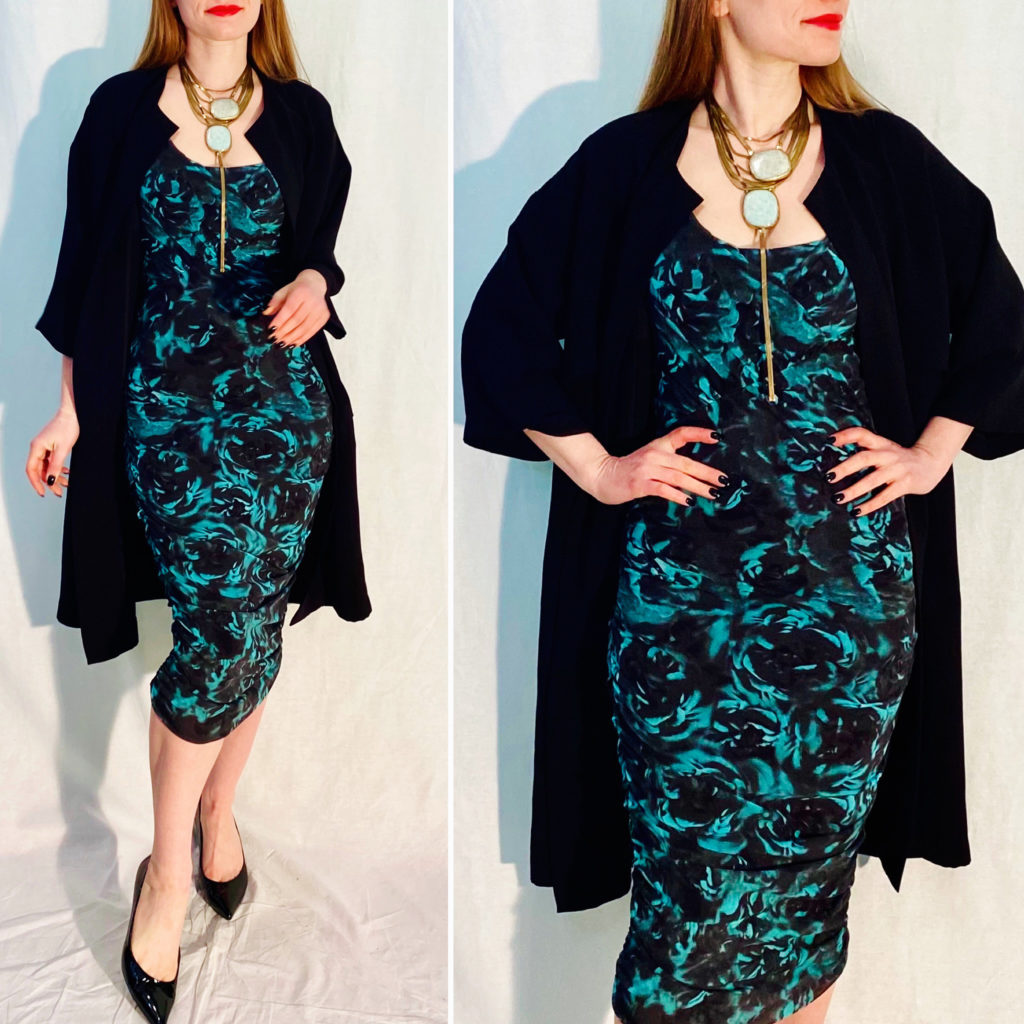
Details: Fuzzi dress (thrifted), Noul coat (thrifted), Lena Bernard necklaces (eBay ad Poshmark).
Thoughts: I had heard of Fuzzi (Italian designer brand) before but this was my first time spotting it at the thrifts. I have a weakness for “collecting” new-to-my-closet designers, so I decided to take a risk — the dress looked tiny on the hanger. It’s a ruched mesh layer overlaid over a stretchy lining. The construction is *chef’s kiss* actually. It stretched to accommodate all my, ahem, assets and is quite flattering too. (I am wearing a size Large which is not surprising as this is Italian sizing.) I am generally not a fan of body-con dresses but I find that ruching helps me feel less “exposed”. Plus, I love wearing these long, column-like dresses with duster-style toppers. This Noul one will surely prove very versatile.
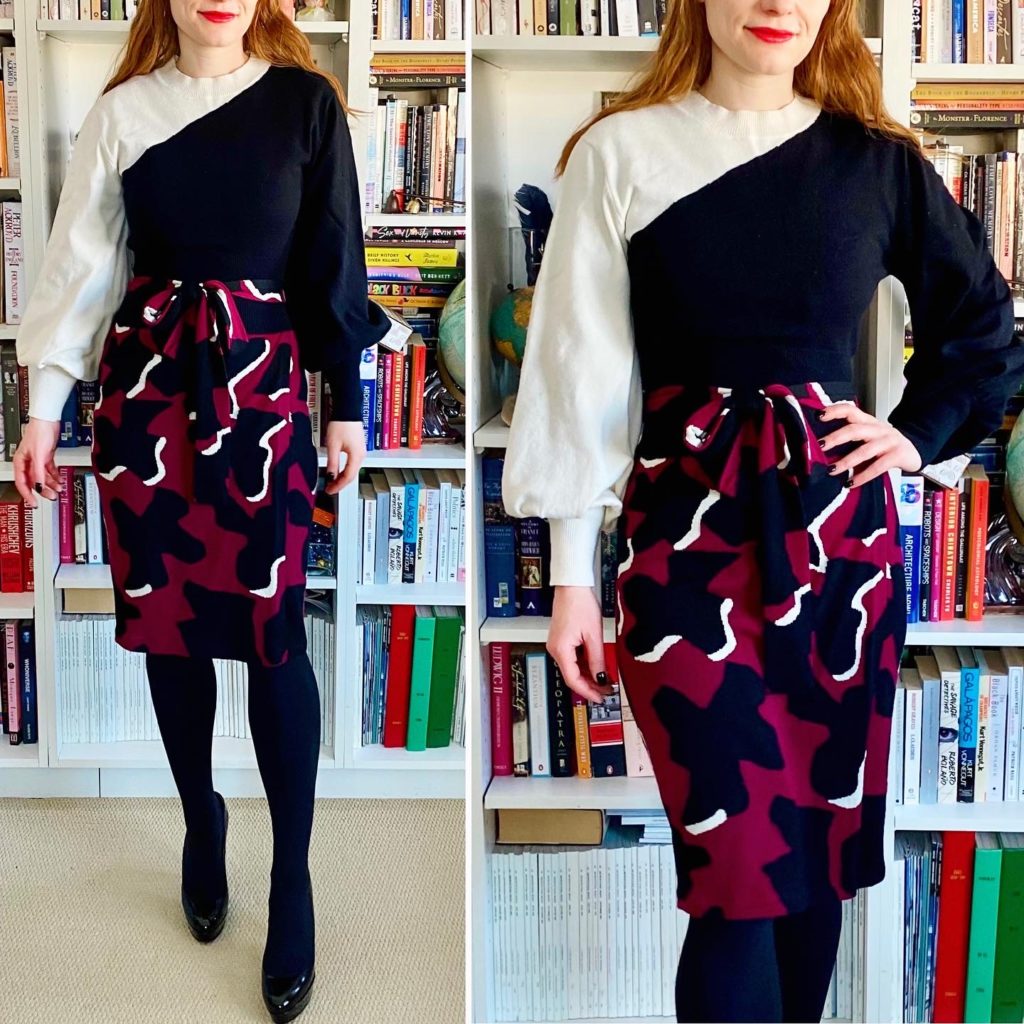
Details: Oak & Fort sweater (thrifted), DVF dress (thrifted).
Thoughts: Here are 2 pieces that seemed to have limited versatility in my closet — together, they work like magic. I find wrap dresses to be a bit of a one-trick pony in general, which is another reason I don’t tend to buy them. This DVF dress is an exception, and I got it mainly because I love the print. It’s also wool, which I prefer over the jersey material that DVF usually uses in their wrap dresses. I find it hangs better for me. I really like this dress but do find that it’s hard to style in interesting ways. So, it was a stroke of genius to pair it with this sweater, which I have also struggled to style in the past. The fabrics have similar weight, so it almost looks like they are one piece. Loved it!
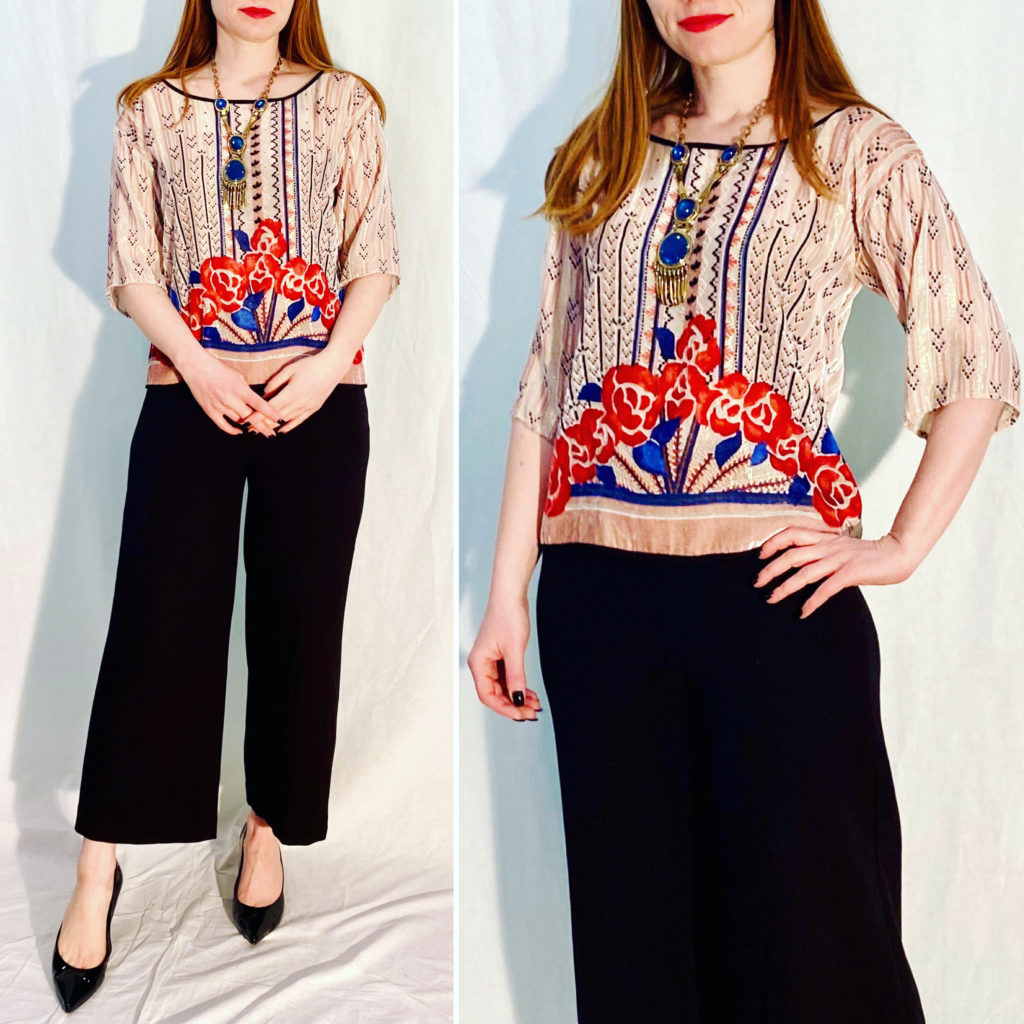
Details: Moulinette Soeurs top (thrifted), Kimchi Blue pants (thrifted), Rafael Alfandary necklace (secondhand).
Thoughts: I adore the Art Nouveau-inspired pattern of this Anthro top. It’s so unique. It might be a challenge to style in different ways, but I’m going to give it a try. This outfit, however, was a no-brainer. Simple, but lovely.
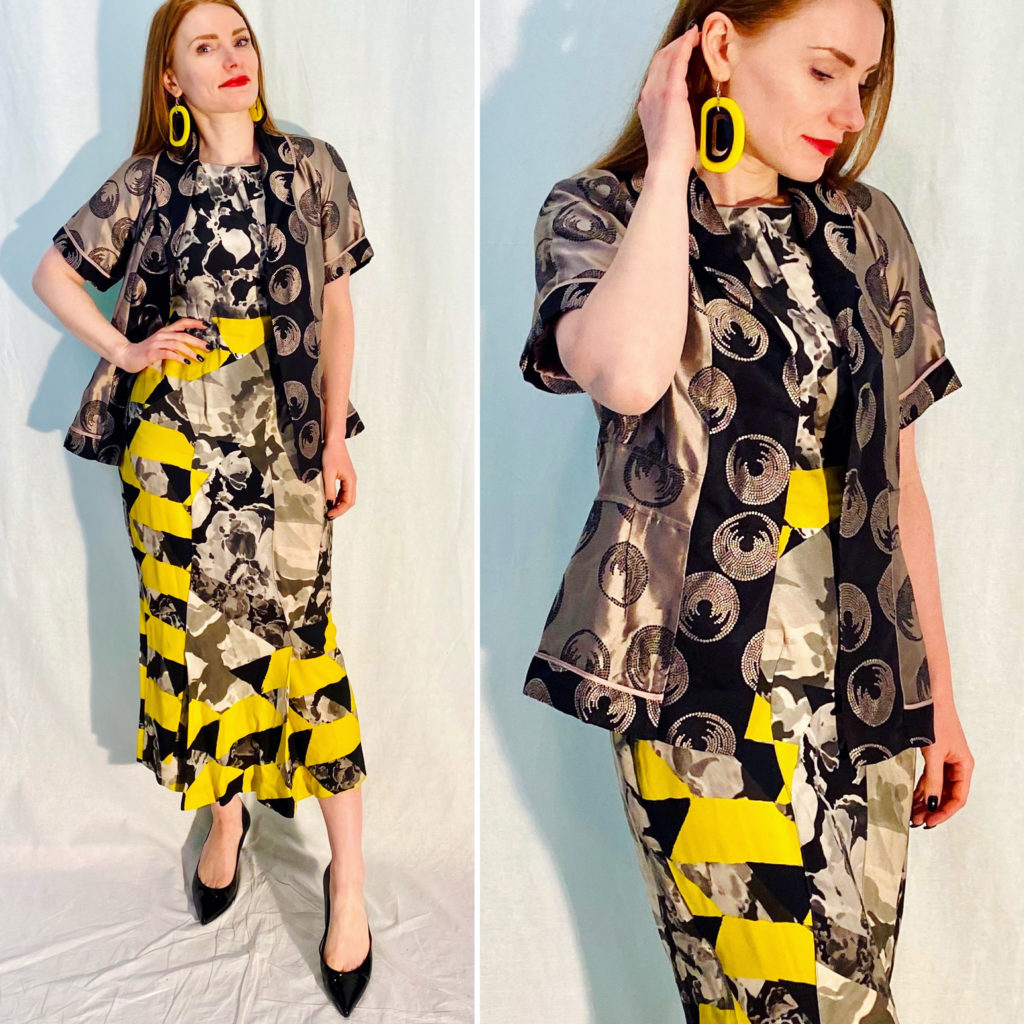
Details: BCBG jacket (thrifted), Dries Van Noten dress (ebay), Copper Canoe Woman earrings (gift).
Thoughts: I pulled out two old pieces from my archive closet because I suddenly felt nostalgic for both. I like how these prints build off each other. The earrings were my piece de resistance — they are made by an Indigenous artist and gifted to me by my best friend.
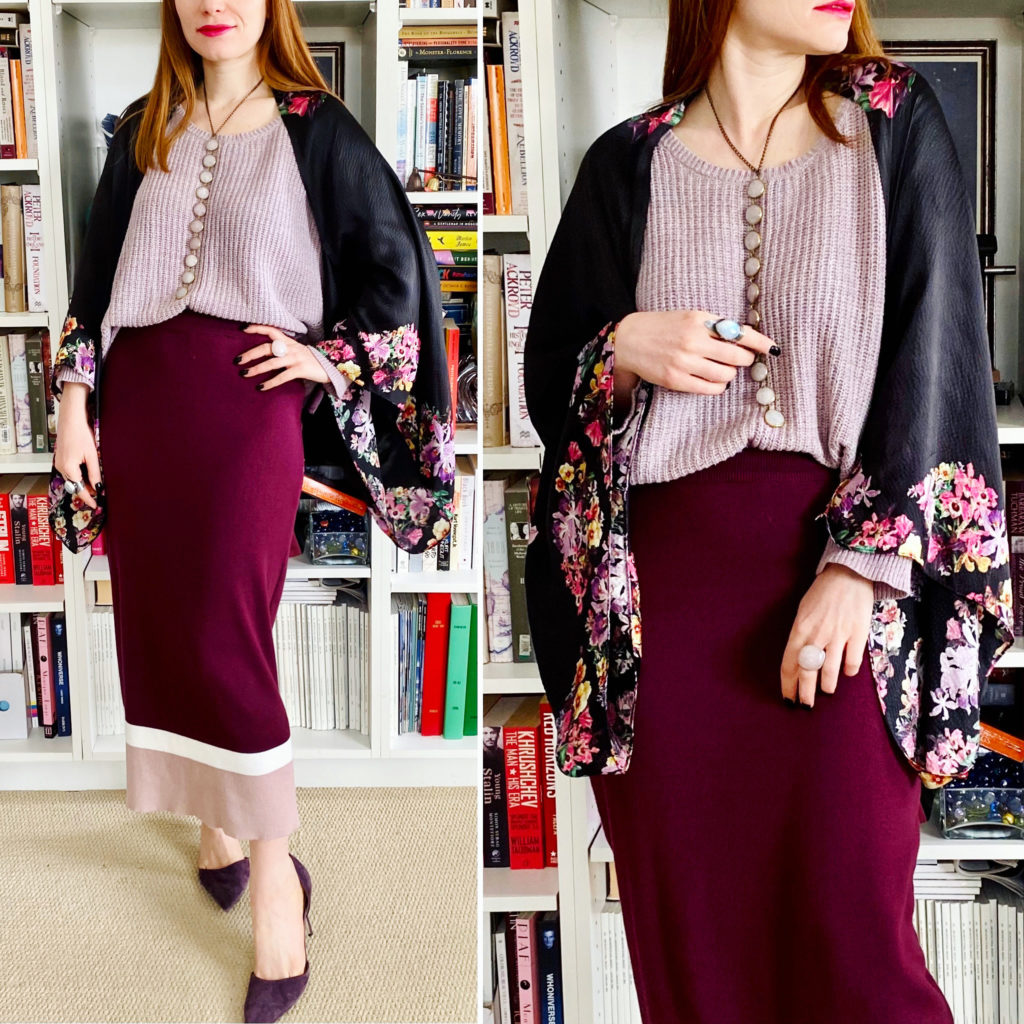
Details: Ted Baker wrap (consignment), Moth sweater (thrifted); Lyssa Studio skirt (thrifted), Lena Bernard necklace (thrifted)
Thoughts: This is the kind of outfit I love wearing around the house. Easy, comfortable, but still something that makes me feel fabulous. A stretchy, knit skirt is great for that. Ditto cape-like, loose toppers. Fun, forgiving, and fantastic.
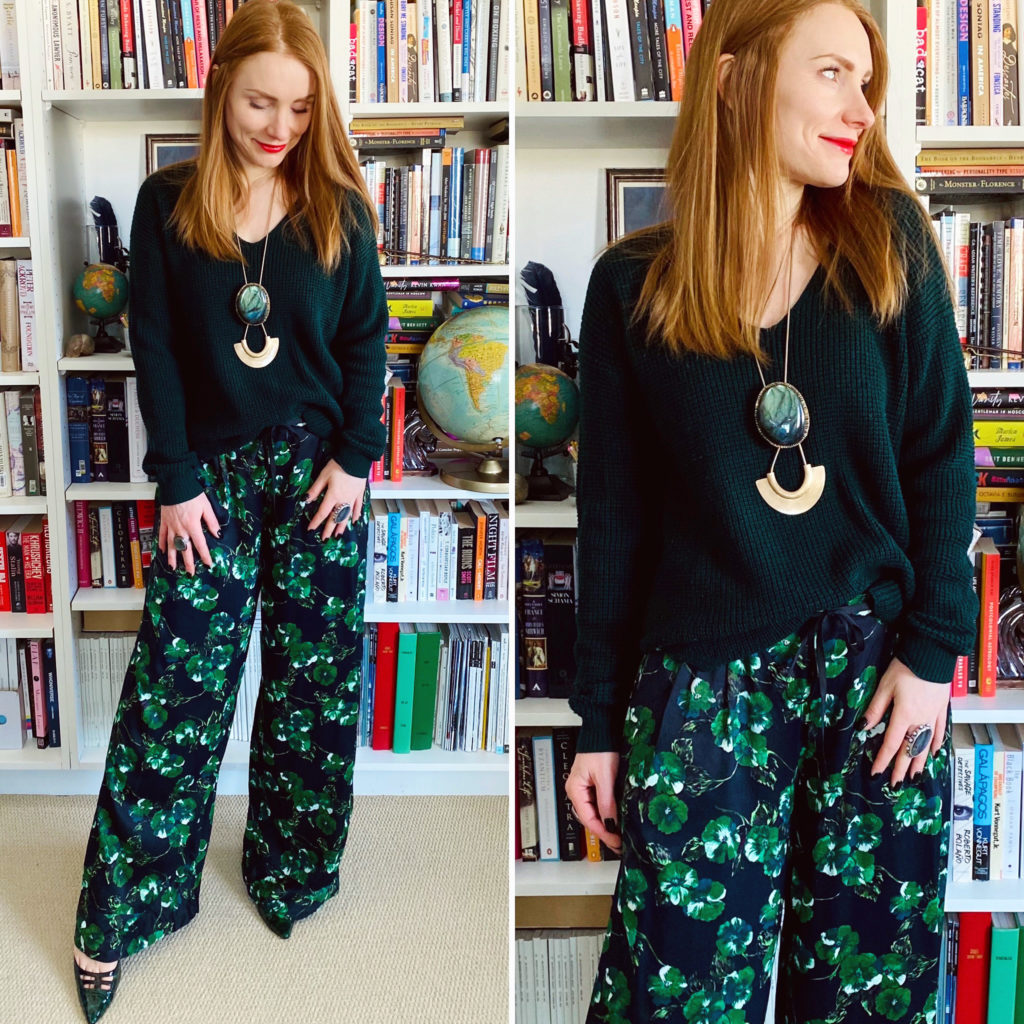
Details: Wilfred sweater (thrifted), Elevenses pants (thrifted), selfmade necklace
Thoughts: Another outfit with Big Lebowski energy, which might have become one of my main inspirations for “house wear” in 2022. Drawstring palazzo pants are basically fancy pyjamas. Add a comfy top and you’re set. Instead of a cape/duster, I added a statement necklace for that touch of fabulous.

